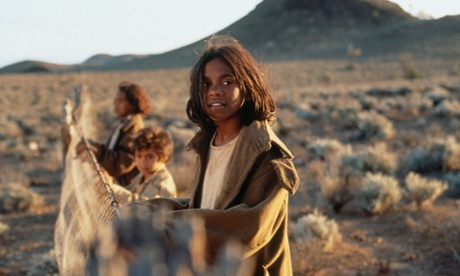
Phillip Noyce's 2002 film Rabbit-Proof Fence, a hard-hitting Australian drama based on the real-life story of three members of the stolen generations who undertook a long and perilous on-foot journey to return to their mother, made considerably more money in the US than it did at the local box office. In Australia the film grossed about $3.7m; in the States it was almost $6.2m.
The US distributor Miramax advertised the film with the tagline: "What if the government kidnapped your daughter? It happened every week in Australia from 1905 to 1971." Eric Abetz, then special minister of state, was so incensed he demanded an apology from Noyce and threatened to use federal funds to finance a campaign against it.
"They're asking me to apologise for the poster?" the director shot back. "Maybe they could apologise to our Indigenous citizens."
While Noyce and the screenwriter, Christine Olsen, claimed Rabbit-Proof Fence was non-political in its intent, the film generated significant controversy in Australia – including attacks from high-profile conservative columnists. More than a decade later, audiences can perhaps revisit Rabbit-Proof Fence more thoughtfully.
What they’ll find is a film both powerful and pondering, hard-hitting and softly spoken, steered by three tremendous performances from actors who seem to reflect all its emotions on their young faces.
Based on a non-fiction book by the Indigenous author Doris Pilkington (whose mother Molly is one of the three main characters), the film was shot by veteran Christopher Doyle with delicate sun-kissed cinematography that gently soaks up outback settings, belying the traumatic story at the heart of it.
Molly (Everlyn Sampi), Gracie (Laura Monaghan) and Daisy (Tianna Sansbury) hopelessly try to run away from government representatives sent to snatch them and remove them from their family. The kids are taken to a boarding house where they speak in their native tongue and are told: “We don’t talk that jabber, we talk English.” They escape and follow the eponymous fence, using it as a guide to get home.
Kenneth Branagh plays AO Neville, a browbeating public servant who lingers ominously on the peripheries of the story, pounding his fists and hollering about eradicating “half-castes” from existence. If Neville adds a hard heart to the story, moments of kindness from random characters soften it. A woman who catches one of the girls stealing eggs gives them food and blankets. A camper provides advice that saves them a hundred or so miles of walking.
Rabbit-Proof Fence is strongest when it is character-oriented and reflective. During one fence-side moment, Daisy, the youngest of the three girls, sits on the ground complaining that her legs hurt. She is picked up and carried by Molly. It is one of several quietly affecting scenes that, in their own simple way, are more powerful than the film’s many moments of confrontation.
Another occurs at a remote train station where Gracie strays from the group. She strolls down overgrown train tracks and is interrupted by authorities, who arrive and bundle her into a car. Gracie stares out the back window at Molly and Daisy crouched behind a large wooden log. Molly says: “She gone. She not coming back.” So much of the film is encapsulated in that moment: the unbreakable bond between family; the trauma of being separated; the powerlessness of individuals in the face of government oppression.
There are precious few grey areas in Rabbit-Proof Fence. Noyce has no qualms about telling the audience what to feel and when to feel it. Moral interpretations get a little more complicated when the film contemplates the perverse logic ordinary Australians used to enforce stolen generation policies. “The bush natives have to be protected against themselves," says Neville. "If they would only understand what we are trying to do for them.”
While films about Indigenous people often carry commentaries on racial prejudice and inequality (such as Walkabout, Toomelah, Red Hill and Australian Rules), it is rare for them to tackle these issues with such powerful polemic. It is impossible to watch Rabbit-Proof Fence and not be in some way affected by it.
The first words spoken in it – “this is a true story” – might have encouraged sceptics to retrieve the proverbial clipboard and red pen. But viewers who picked apart Rabbit-Proof Fence on the basis of factual discrepancies probably missed the point. Noyce’s ultimate aim was to find emotional truth, not only in the story of these three girls, but of countless members of the stolen generations who endured similar circumstances.

